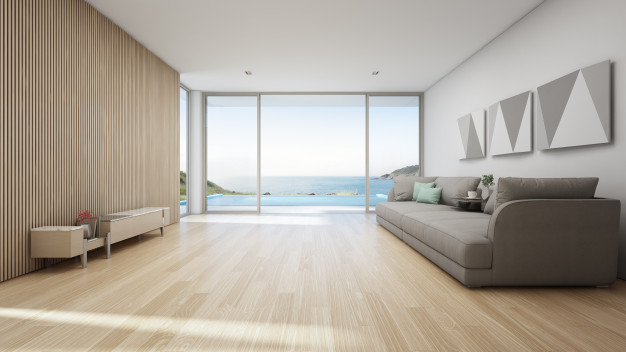Whether you’re renting your first apartment or just moving on up, you might consider this: Furnished or unfurnished?
Furnished apartments are less common but might possibly be the right choice for you. Furnished apartments usually come equipped with furniture, basic kitchen appliances and tableware, bathroom necessities and possibly a few other amenities. The exact items will vary depending on the landlord and what kind of place you’re renting.
Here are a few pros and cons to consider before you decide if furnished or unfurnished is right for you.
Furnished apartments: The pros
Moving will be easy. If you’re a frequent mover, you want to keep your stuff to a minimum. Renting a furnished place means you won’t own most of the big items in your place, and it’ll be easy for you to pick up and move on short notice. It’s also cheaper if you hire professionals since they’ll have a lot less that needs to be moved. Plus, you could do without the joy of moving a couch up a flight of stairs, right?
You’ll save money on buying furniture. This one has two sides – see the cons list later. A furnished apartment will save you a lot of money upfront if you don’t have furniture already. Do you really want to add a Kes 10,000 mattress to the things you have to pay for early on?
They’re good in a time crunch. Ideally, if you’re searching for a new apartment, you should measure your existing furniture and then pick a place that will fit your stuff. This can be a problem if you’re relocating on short notice, or if you’re moving across the country and can’t make the trip to see your new place in person before moving day. A furnished place takes the hassle out of moving in a time crunch – all you have to do is show up.
Sometimes you can get a shorter lease. Most furnished apartments won’t require a year-long lease, since they cater mostly to students and travelling professionals who don’t stay in one place for too long. If you’re not ready to commit to one place for too long, you’re probably better going after a furnished apartment. They’ll be willing to do a shorter lease, and you don’t have to do such a big move for a place you’re only staying in for a few months.
Furnished apartments: The cons
Your rent and deposit might be higher. The money for the furniture has to come from somewhere. This isn’t a free gift for you, but money your landlord paid to make the apartment better. They’re going to build the price of the furniture into rent, and probably demand a larger security deposit to protect from damage to their valuable furniture.
You face a higher liability. In an unfurnished place, you might not get your deposit back if you accidentally bust a hole in the wall or your kid draws all over the walls with crayons. There’s a lot more to break in a furnished apartment. Scratch the dining room table? That stuff doesn’t belong to you, so you’re going to have to fix it yourself or pay to get it fixed. Better be careful!
Tip: Take a video inventory of everything the landlord provides in a furnished apartment before you move in. Take note of anything that’s broken. That way, you’ll have indisputable evidence if your landlord tries to charge you for something you didn’t break.
You’ll have no control over most of your décor. If you don’t like the couch in your furnished apartment, it’s a pain to get a different one. You could buy a new one, but you’ll have to figure out what to do with the old one, and if your landlord will let you in the first place. You can hang art on the walls and add other personal touches around the place, but you won’t have complete control over the look of your apartment. The look of the apartment is mostly determined by them, so if you care a lot about decoration, this probably isn’t the option for you.
You’ll have fewer apartments to choose from. There’s a reason rental income is listed as “passive” on tax returns: the preference is for less active work. Furnishing and maintaining the furniture in an apartment is a competitive advantage but requires a lot of work by the landlord, so it’s not as common, leading to a lot fewer options than for unfurnished apartments.
The definition of “furnished” varies. You could be getting an apartment with everything you could think of to put in your apartment, or there might just be a bed frame and dresser. There’s no real standard of what “furnished” means, so you might still end up having to bring your own furniture to fill in some gaps anyway.
Not a lot of room for what you already have. You probably don’t have a lot of stuff if you’re looking at furnished apartments, but you already have something. Anything you bring with any bulk might be difficult to fit in the apartment, requiring some clever rearrangement to make everything fit and function.
See Also: Is a Furnished Apartment Good Real Estate Investment?














